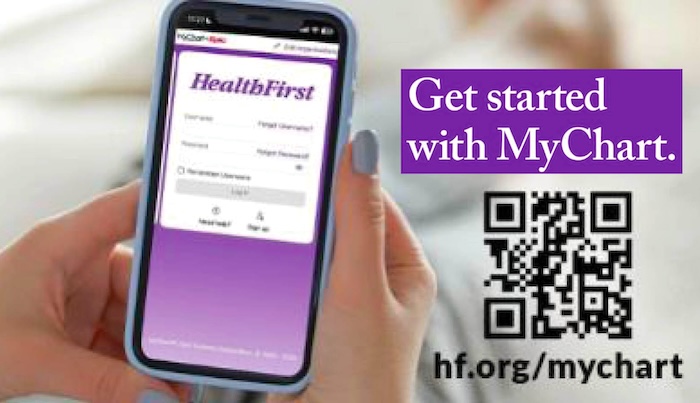ACO Analytics Software for Better Data Integration and Care Delivery
By Space Coast Daily // December 28, 2024

Large Accountable Care Organizations (ACOs), that serve millions of patients annually, are already using ACO analytics software to assess and compare both clinical performance and financial outcomes across standardized groups of care episodes and explore essential business questions in detail.
They report on successfully integrated hospital, claims, and provider information, needed to enable informed decision-making and actions that enhance patient care, and thus improve population health, with cost reductions. What approaches do they use to achieve sustainable tackles?
In the United States, healthcare continues to shift from a focus on individual visits or procedures to a broader, episode-based approach. It organizes patient care into comprehensive episodes that include all key services related to a condition or procedure. The Centers for Medicare and Medicaid Services (CMS) introduced the Bundled Payments for Care Improvement (BPCI) Initiative to advance this model. Via this program, participants make payment agreements that hold them financially and operationally accountable for forty-eight episodes of care, as defined by one of four distinct models.
Model 1 defines an episode of care as a patient’s stay in an acute care department/hospital. Model 1 provides a Medicare discount to the hospital based on payment rates and separate payments to physicians for their services.
Under Model 2, an episode of care begins when a patient is admitted to the hospital and extends to care and all related services for thirty, sixty, or ninety days after discharge.
Model 3 assumes that the episode of care is triggered after discharge from the acute care hospital and extends to post-acute care in rehabilitation centers, skilled nursing facilities, and other similar settings. Start of services: within thirty days of hospital discharge. End of services: thirty, sixty, or ninety days after episode onset.
Model 4 assumes a single, prospectively defined bundled payment from the hospital that includes all services provided by the hospital and its specialists during an episode of care that lasts while the patient is in the hospital. The bundled payment amount also includes related readmissions for thirty days after the patient is discharged from the hospital.
ACOs that focus on care for conditions in outpatient, inpatient, and post-acute settings are increasingly recognizing the value of analyzing costs, margins, and utilization of services that are organized into Model 2 episodes of care. This approach matches well with the comprehensive set of tactics these healthcare organizations have already developed to address issues of accountable care, value-based purchasing, and population health.
If ASOs lack a standardized way to assess financial and clinical metrics for specific patient cohorts — like those used in the 48 episodes of care under the BPCI Initiative — they cannot gain the key strategic insights needed for decision-making. It limits their opportunities to improve care delivery, enhance outcomes, and reduce cost and waste. ACOs need a solution that shows the cost and utilization of all aspects of care associated with a given clinical event, regardless of where the care was delivered. This approach is only possible by merging data from providers, hospitals, and claims.
This is where HeathTech product companies step up. They provide large healthcare enterprises with data management and analytics tools that identify weak links in the chain and offer innovative solutions. The Belitsoft healthcare software development company creates and customizes analytics tools such as ACO analytics software.
Challenges that Accountable Care Organizations Face while Data Integration
ACOs need access to data about the full range of services their patients receive, including associated costs and outcomes. Without access, population health management becomes impossible to implement meaningfully. Healthcare systems have to deal with the following issues to tackle their demands:
■ Lack of deeply insightful views because of not merging data from the patient claims, providers, and hospitals
■ Insufficiently broad views of certain patient cohorts
■ Absence of clear insight into which patient cohorts drive the institutions’ costs, margins, and utilization of services makes it challenging to align resources with appropriate patient services
■ Lack of data validity can lead ACOs to distrust the data they see, making them hesitant to leverage it for identifying priority areas in financial, operational, or clinical performance enhancements
■ Inquiries and analysis around standard, consistent clinical categories are not structured.
■ Lack of a straightforward method to consistently visualize the relative performance of different patient groups across two dimensions, such as variation and cost
■ Absence of a simplified way to explore various views of the same data — like analyzing margins, costs, and utilization by payers, providers, or care sites
■ Absence of integrated data sources prevents analyzing variations in patient experiences across inpatient, outpatient, primary, specialty, and continuing care settings (rehabilitation, home care, nursing facilities, etc.)
■ Insufficient financial data to make data-driven decisions.
Features of ACO Analytics Software
To reduce the time to value, ACOs focus on the definitions and inclusion and exclusion criteria from Model 2’s episodes of care, instead of creating their groupers, and use their existing development and implementation methodology. Here are the tasks the advanced analytics solution helps deal with:
■ Visualizing to support strategic prioritization efforts (for instance, plotting episodes of care against variation coefficients and costs)
■ Defining an appropriate focus area for resource-intensive and highly variable packets/episodes, which simplifies their identification and further investigation
■ Plotting graphs of average expenditures per bundle across service providers or care sites, stratified by categories of services such as outpatient, inpatient, professional, additional, etc.
■ Pinpointing and reviewing all associated costs related to bundles/episodes
■ Identifying bundles/episodes that utilize the most resources and present the biggest opportunities for reducing costs by using the 80/20 rule also known as Pareto approach
■ Analyzing specific episodes/groups of episodes, as well as analysis of information at different levels (from the payer level to the patient level)
■ Pinpointing unnecessary deviations in the care routines of providers for their subsequent elimination
■ Assessing and enhancing clinical practice by identifying variation and cost as a reliable proxy for variation in clinical approach
■ Analyzing all associated costs tied to bundles/episodes as a basis for informed decision-making to enhance care delivery and allocate resources effectively through targeted improvement initiatives
■ Standardizing care approaches or the suppliers, tests, and tools utilized for a particular patient groups
■ Monitoring that patients receive certain critical best interventions that improve outcomes.
Organizational Measures to Implement ACO Analytics Software
Stakeholders are highly recommended to clearly define the key questions they want to address regarding episodes of care, margins, costs, utilization, and variation before designing an application. Then ACOs should adhere to the following initiatives:
■ Bring together a group of committed stakeholders to explore various business and clinical use cases and identify the best analytical approaches for achieving the desired insights
■ Determine which databases and data sources should be combined to deliver accurate and relevant information
■ Save development time by using CMS definitions to define forty-eight BPCI bundles/episodes.
What Benefits Practices Get from Implementing ACO Analytics Software
By aligning organizational efforts and implementing data analytics software, ACOs can aggregate patient and hospital billing data, and claims across all patient care episodes. The ACOs that have already used the analytics software also report improvements such as:
■ A simple assessment and comparison of financial and clinical performance outcomes across forty-eight CMS episodes of care, followed by a deeper dive into key business issues
■ Combining multiple data sources to enable the evaluation of differences in patient experiences who receive different types of medical and post-hospital care
■ Rapid insight into relative performance and relative opportunity for improvement of specific episodes of care
■ An opportunity to benchmark themselves against other providers and engage effectively with payers.
How a Healthcare Software Development Company Can Help
An outsourcing company like Belitsoft that specializes in healthcare software development assists top healthcare data analytics companies in building robust data operating systems.
For integrated data platforms developed to collect, store, process, and analyze large volumes of data from various sources (Electronic Medical Records, clinic management systems, laboratory systems, financial systems, etc.), the healthcare software development companies:
■ Automate data processing workflows (cleansing, standardization, and normalization).
■ Configure scalable data warehouses.
■ Set up and implement analytical tools for creating dashboards, reports, and data visualizations.
■ Ensure a high level of data security and compliance with healthcare regulations such as HIPAA.
■ Integrate machine learning and AI into analytics.
■ They also help build specialized analytical applications like ACO Analytics software for:
■ Identifying data marts to supply information on claims, healthcare providers, and hospitals
■ Pulling data from multiple data warehouses
■ Integrating claims, provider, and hospital information
■ Providing information in an easily accessible visual framework for enhancement at a high level
■ Visualizing specific episodes of care graphed on several dimensions (for instance, variation and cost)
■ Developing bubble charts to support numerous and diverse types of comparisons depending on the chosen filters
■ Visualizing resource-intensive bundles/episodes with high variability by a quadrant chart
■ Filtering by 2+ service providers to compare average costs among them
■ Comparing and contrasting of information in the categories of cost, utilization, and opportunities for improvement
If you are looking for expertise in data analytics, data infrastructure, data platforms, HL7 interfaces, workflow engineering, and development within cloud (AWS, Azure, Google Cloud), hybrid, or on-premises environments, a healthcare software development company like Belitsoft also can serve these needs.











